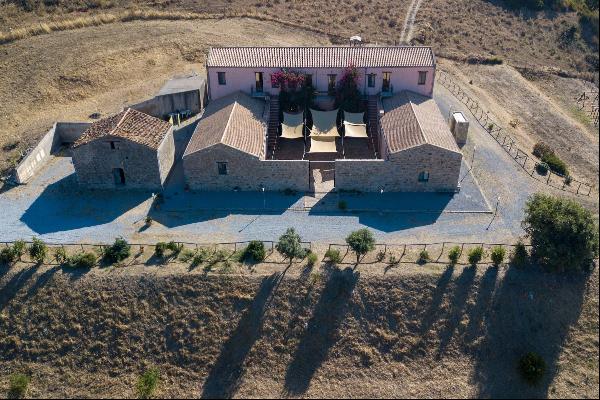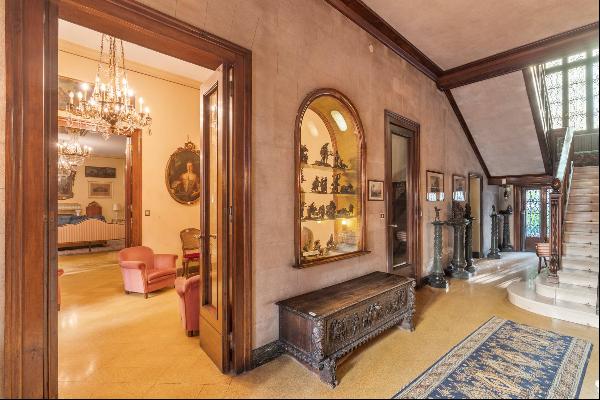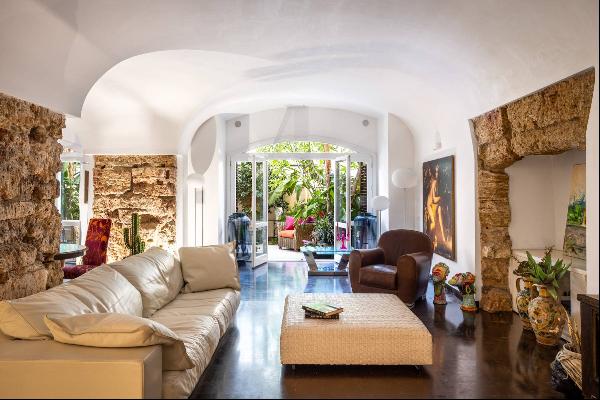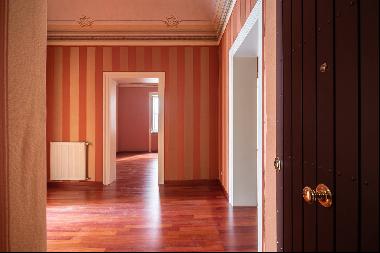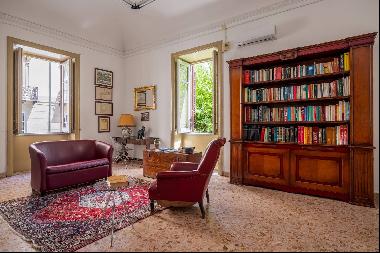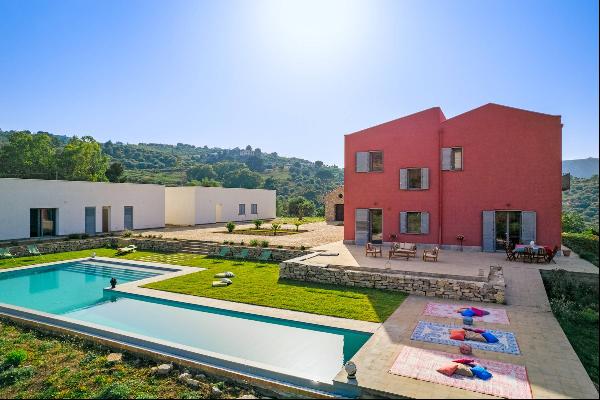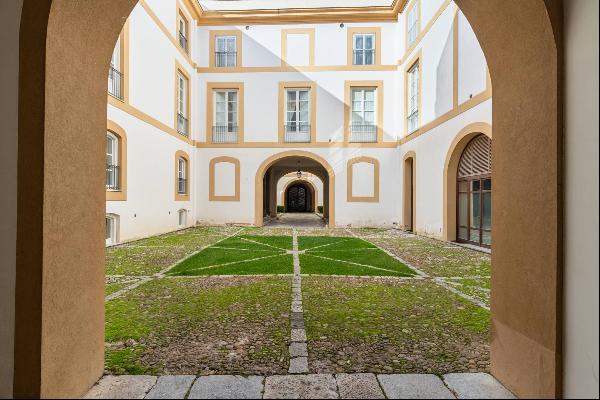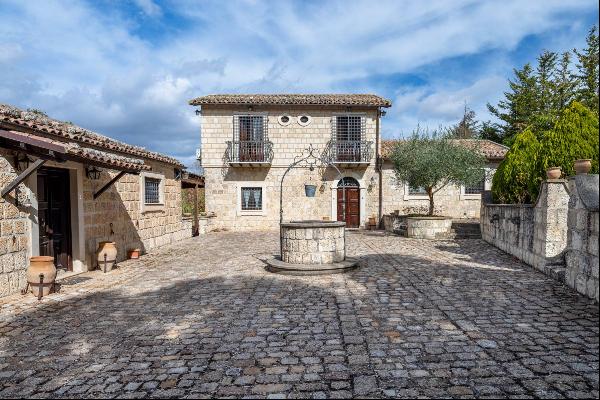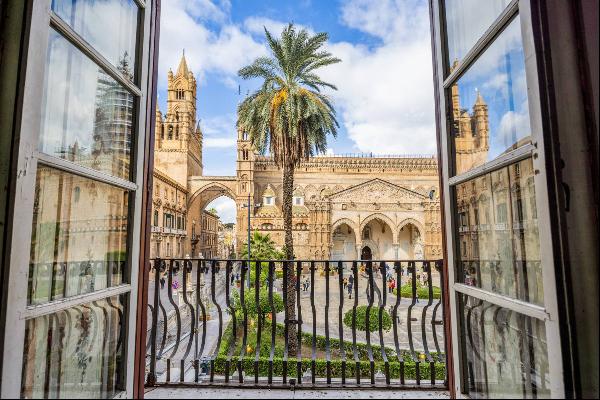
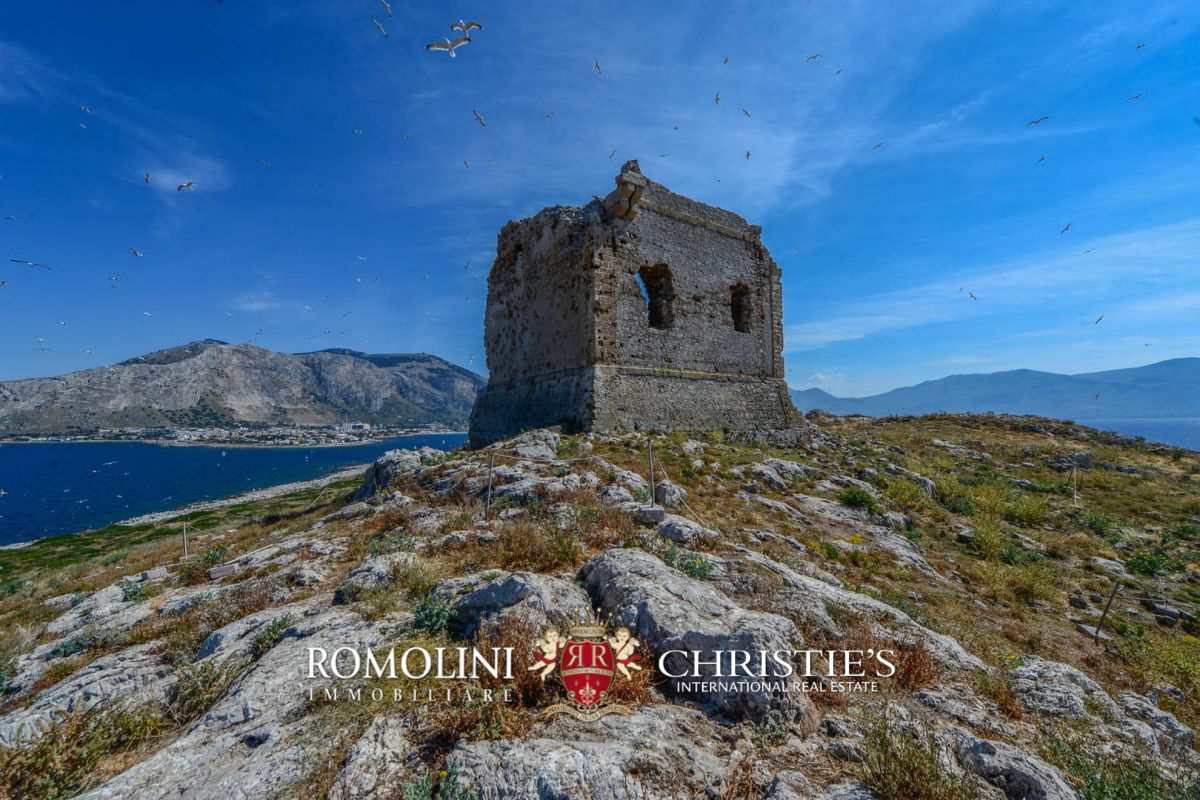


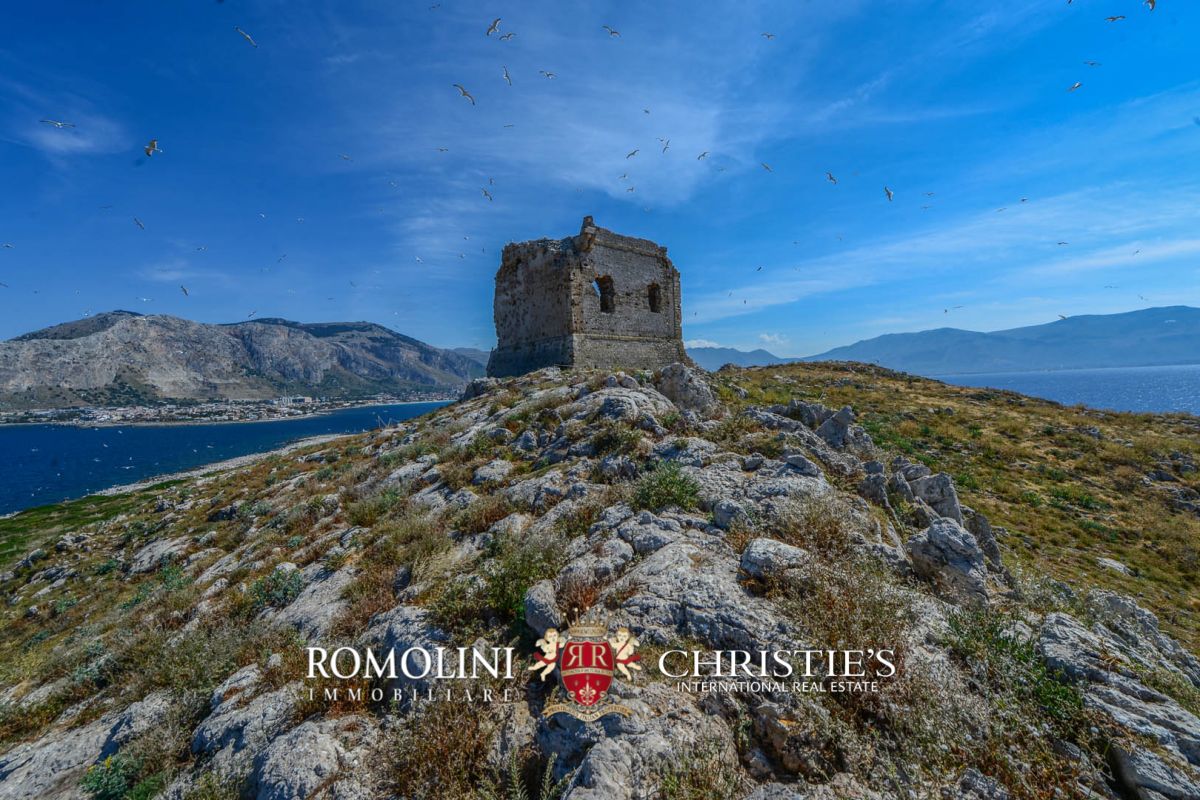


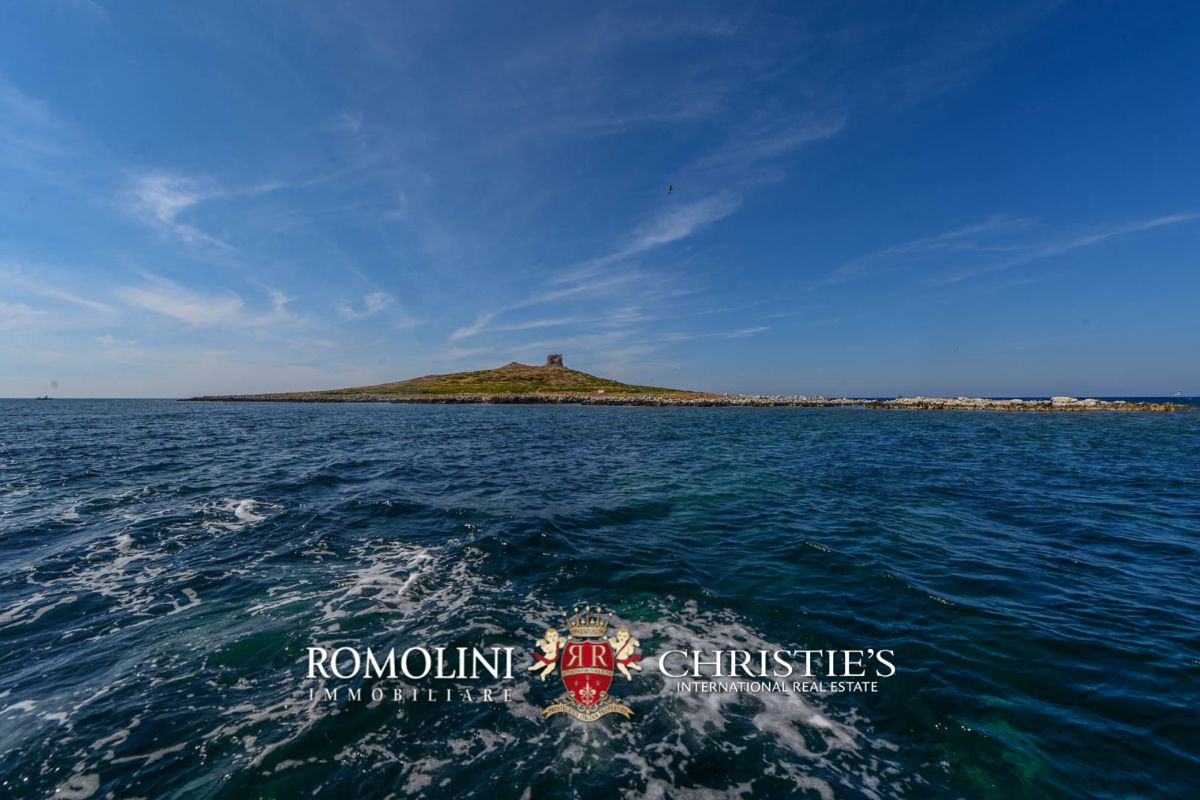
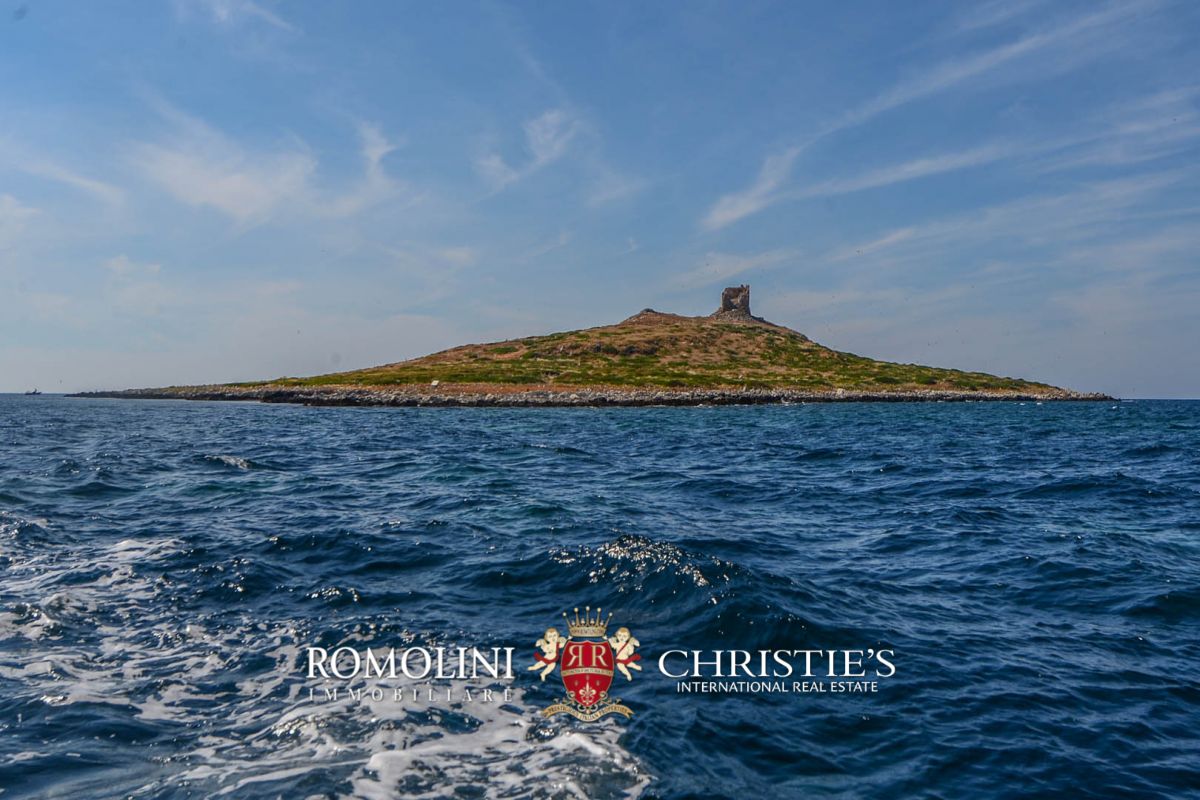

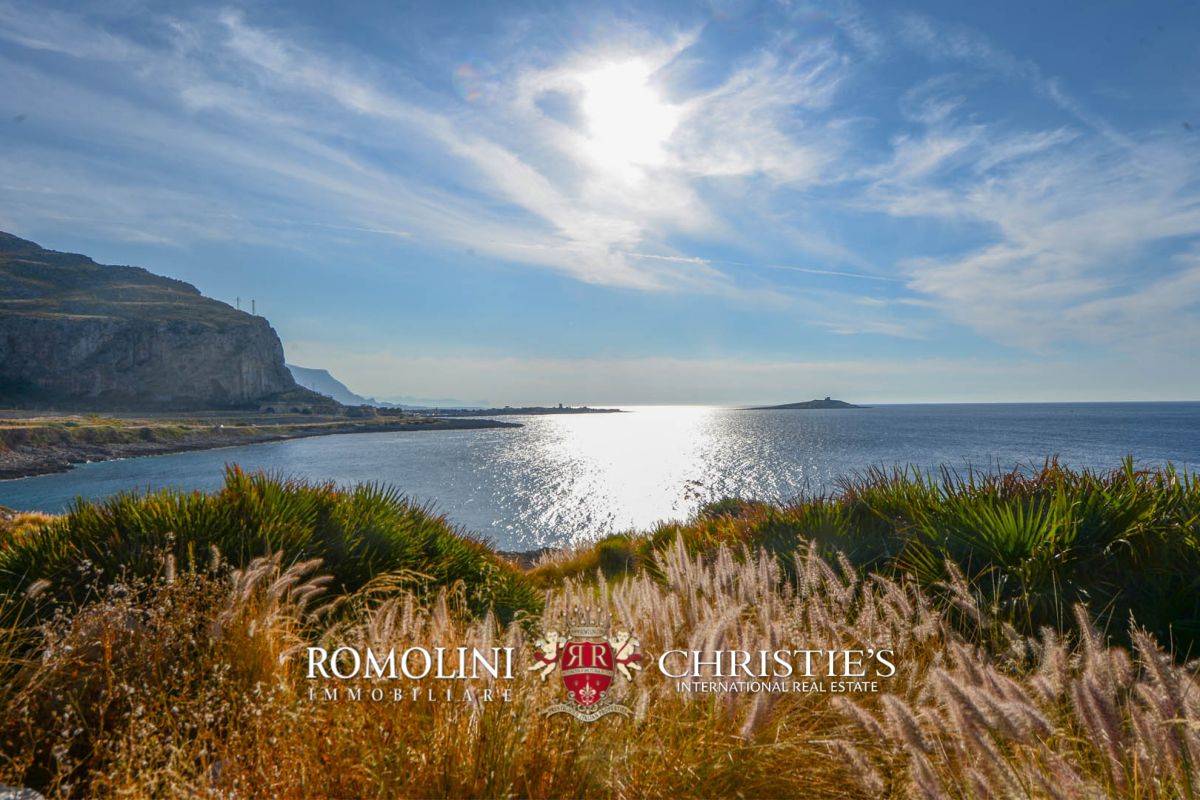
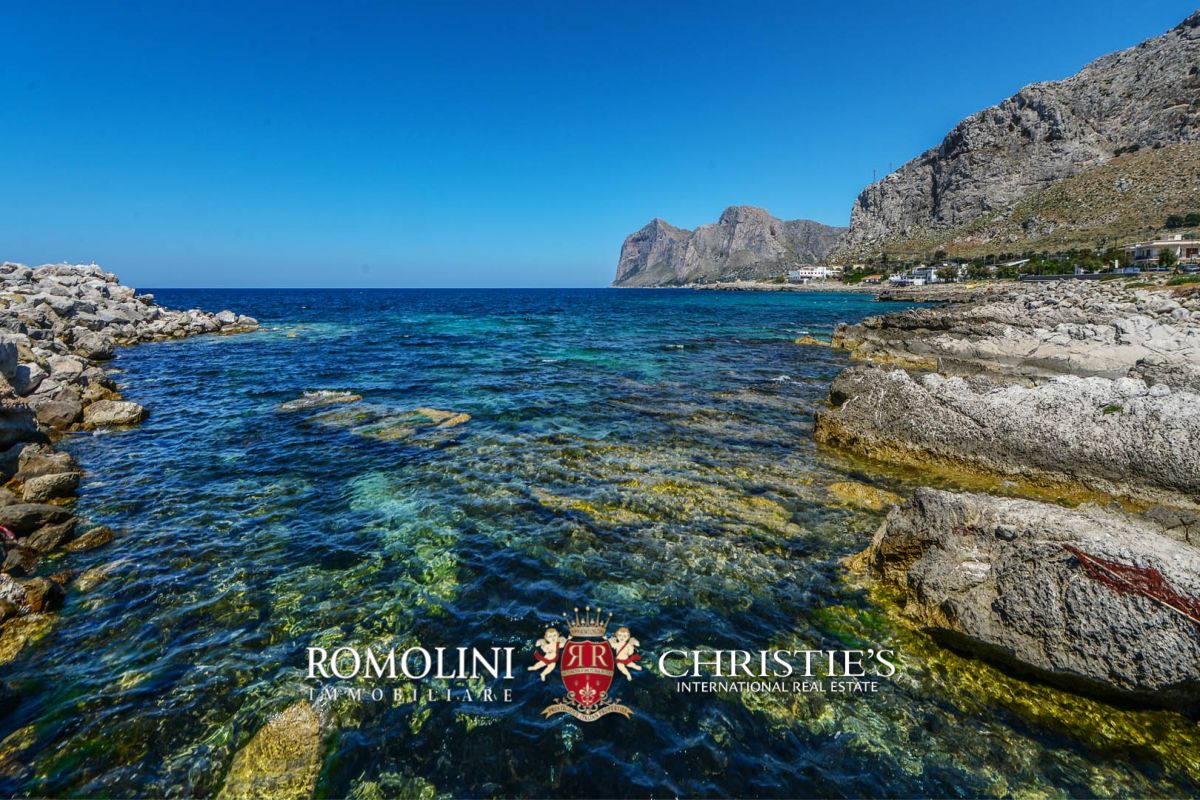
- For Sale
- USD 1,755,319
- Build Size: 5,317 ft2
- Property Type: Other Residential
Located a short distance from Palermo and the mainland (300 m), the Isola delle Femmine (literally, Island of the Women) is 13.9 hectares in surface with a maximum height of 35 m above sea level, where we can spot the remains of an ancient watchtower.
Once landed on the mainland, various cities in Sicily are easily reached: Palermo (19km; 40’), Monreale (21km; 40’), Trapani (92km; 1h 5’), Marsala (110km; 1h 25’) and Agrigento (189km; 2h 25’).
Closest airports are Palermo Falcone-Borsellino (16km; 15’), Palermo Boccadifalco (16km; 15’), Trapani Birgi (97km; 1h 5’) and Catania Fontanarossa (223km; 1h 30’).
The seabed around the island is easily reachable, even by non-professional scuba-divers, thanks mainly to the incredible clearness of the water. And it is thanks to this clearness that one can admire the beautiful life forms typical of the island and several remaining of Greek and Roman age.
The island is characterized by the typical Mediterranean steppe, mainly covered in mallow, mandrake and erba stella on the higher ground which leave space to glasswort and bird’s-foot trefoil on the cliffs going toward the coastline. Further enriching the landscape we find beautiful Iris and Romulea flowers. Fauna is mainly composed of lizards, but there are also some beautiful and uncommon species of butterflies.
HISTORY OF THE ISLAND AND BUILDINGS
The legend tales of thirteen Turkish maidens who, condemned for serious crimes, were embarked by their relatives on a ship and left adrift in the middle of the sea. A storm wrecked the ship on a small rocky island, where the girls lived alone for seven long years. When their families, having realized their horrible doings, managed to find the girls decided not to return to their homeland but to found a new town on the mainland. They named it Capaci (Cca-paci, literally here the peace) while the island was renamed Isola delle Femmine (literally Island of the Women).
If we take aside the legend and only consider history, the origin of the name is highly uncertain. What’s sure is that it is the result of a long process of Italianization. Popular tradition uses the toponym Insula Fimi, probably a misspelling of an older Insula Euphemi (where Euphemius is the name of the Byzantine governor of Sicily in the 9th century AD). Other possible origin is the term Fimis, latinization of the Arab word fim (literally bay, strait) indicating the stretch of sea dividing the island from the mainland.
On the island we can find some traces dating back to the Roman age, probably after the second Punic War, in the form of stone and concrete basins once used in the preparation of a typical fish plate.
The well and other rainwater basins date back to the Middle Age instead.
The tower at the top of the island was built in the 16th century as part of a huge defense system encircling Sicily against the attacks of Corsair ships (this defensive project dated back to the 14th century and was continued based on the necessity for several years). As for many other towers of the same age, the project is highly influenced by the Florentine architect Camillo Camilliani, better known for moving and reworking the Fontana Pretoria in Palermo. Camilliani himself, in its Book of Maritime Towers, explains the location and underlines the importance of the tower: “[…] where the tower we discussed should be built, and that would be a great thing; this (tower) grants security to sailors and wanderers crossing that stretch of sea”.
Originally structured onto two floors and now on a single floor, the tower has a squared base (247 sqm – 2,658 sqft). The ground floor was split into three rooms covered with barrel vaults and earmarked to water cistern (two out of three) and armory. From this last local it was possible to climb up to the guardsmen quarter through a hole in the roof, and from the quarters it was in turn easy to reach the rooftop through a wooden ladder. Here there were the artillery pieces to gun down enemy ships.
The tower is currently in very bad shape, mainly because of the heavy damage it suffered during the Allied landing in Sicily as part of the Operation Husky in 1943. After World War II, the tower was neither rebuilt nor maintained and this abandonment contributed to its final decadence.
The building can be fully rebuilt, respecting the original volume of the structure, and it is possible to obtain financing from the European Union or the Ministry of Cultural Heritage and Activities and Tourism for a possible cultural and touristic development program for the isle, all complying with the naturalistic constraint.
As a matter of fact, since 1997 the island have been included in the Natural reserve of Isola delle Femmine for which the Italian League for Bird Protection (LIPU) is managing authority. The European Union recognized the importance of the location which was first classified as SCI (Site of Community Importance) and then as SAC (Special Area of Conservation).
USE AND POTENTIAL USES
The purchase of the island is a unique opportunity for some looking for a “trophy asset”: a private use or simply an activity of preservation of something really unique.
The conservative restoration of the tower would allow making the building usable as a private residence, representative building, corporate image or the realization of a museum allowing tourists to appreciate not just the naturalistic value of the island but also the historical, artistic and archaeological ones.
Once landed on the mainland, various cities in Sicily are easily reached: Palermo (19km; 40’), Monreale (21km; 40’), Trapani (92km; 1h 5’), Marsala (110km; 1h 25’) and Agrigento (189km; 2h 25’).
Closest airports are Palermo Falcone-Borsellino (16km; 15’), Palermo Boccadifalco (16km; 15’), Trapani Birgi (97km; 1h 5’) and Catania Fontanarossa (223km; 1h 30’).
The seabed around the island is easily reachable, even by non-professional scuba-divers, thanks mainly to the incredible clearness of the water. And it is thanks to this clearness that one can admire the beautiful life forms typical of the island and several remaining of Greek and Roman age.
The island is characterized by the typical Mediterranean steppe, mainly covered in mallow, mandrake and erba stella on the higher ground which leave space to glasswort and bird’s-foot trefoil on the cliffs going toward the coastline. Further enriching the landscape we find beautiful Iris and Romulea flowers. Fauna is mainly composed of lizards, but there are also some beautiful and uncommon species of butterflies.
HISTORY OF THE ISLAND AND BUILDINGS
The legend tales of thirteen Turkish maidens who, condemned for serious crimes, were embarked by their relatives on a ship and left adrift in the middle of the sea. A storm wrecked the ship on a small rocky island, where the girls lived alone for seven long years. When their families, having realized their horrible doings, managed to find the girls decided not to return to their homeland but to found a new town on the mainland. They named it Capaci (Cca-paci, literally here the peace) while the island was renamed Isola delle Femmine (literally Island of the Women).
If we take aside the legend and only consider history, the origin of the name is highly uncertain. What’s sure is that it is the result of a long process of Italianization. Popular tradition uses the toponym Insula Fimi, probably a misspelling of an older Insula Euphemi (where Euphemius is the name of the Byzantine governor of Sicily in the 9th century AD). Other possible origin is the term Fimis, latinization of the Arab word fim (literally bay, strait) indicating the stretch of sea dividing the island from the mainland.
On the island we can find some traces dating back to the Roman age, probably after the second Punic War, in the form of stone and concrete basins once used in the preparation of a typical fish plate.
The well and other rainwater basins date back to the Middle Age instead.
The tower at the top of the island was built in the 16th century as part of a huge defense system encircling Sicily against the attacks of Corsair ships (this defensive project dated back to the 14th century and was continued based on the necessity for several years). As for many other towers of the same age, the project is highly influenced by the Florentine architect Camillo Camilliani, better known for moving and reworking the Fontana Pretoria in Palermo. Camilliani himself, in its Book of Maritime Towers, explains the location and underlines the importance of the tower: “[…] where the tower we discussed should be built, and that would be a great thing; this (tower) grants security to sailors and wanderers crossing that stretch of sea”.
Originally structured onto two floors and now on a single floor, the tower has a squared base (247 sqm – 2,658 sqft). The ground floor was split into three rooms covered with barrel vaults and earmarked to water cistern (two out of three) and armory. From this last local it was possible to climb up to the guardsmen quarter through a hole in the roof, and from the quarters it was in turn easy to reach the rooftop through a wooden ladder. Here there were the artillery pieces to gun down enemy ships.
The tower is currently in very bad shape, mainly because of the heavy damage it suffered during the Allied landing in Sicily as part of the Operation Husky in 1943. After World War II, the tower was neither rebuilt nor maintained and this abandonment contributed to its final decadence.
The building can be fully rebuilt, respecting the original volume of the structure, and it is possible to obtain financing from the European Union or the Ministry of Cultural Heritage and Activities and Tourism for a possible cultural and touristic development program for the isle, all complying with the naturalistic constraint.
As a matter of fact, since 1997 the island have been included in the Natural reserve of Isola delle Femmine for which the Italian League for Bird Protection (LIPU) is managing authority. The European Union recognized the importance of the location which was first classified as SCI (Site of Community Importance) and then as SAC (Special Area of Conservation).
USE AND POTENTIAL USES
The purchase of the island is a unique opportunity for some looking for a “trophy asset”: a private use or simply an activity of preservation of something really unique.
The conservative restoration of the tower would allow making the building usable as a private residence, representative building, corporate image or the realization of a museum allowing tourists to appreciate not just the naturalistic value of the island but also the historical, artistic and archaeological ones.





